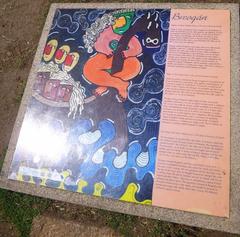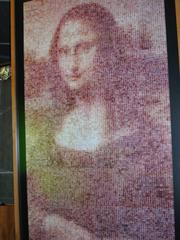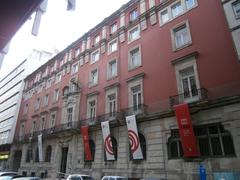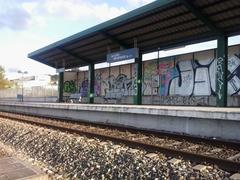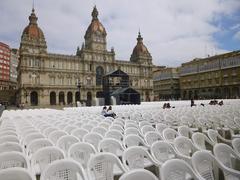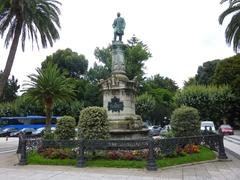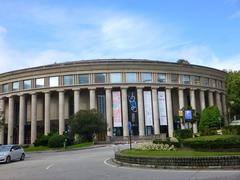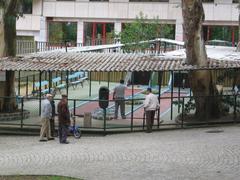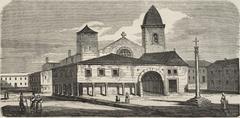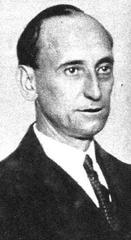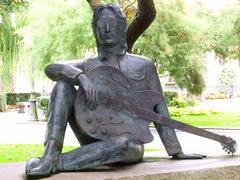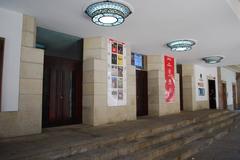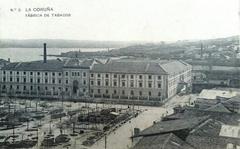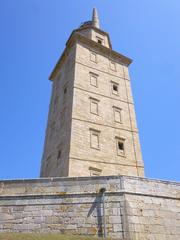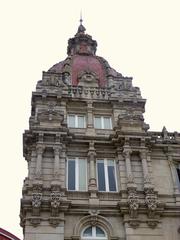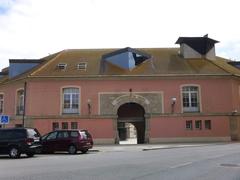Iglesia de San Jorge in A Coruña: Visiting Hours, Tickets, History, and Visitor Guide
Date: 04/07/2025
Introduction
The Iglesia de San Jorge (Church of Saint George), located in the heart of A Coruña, Spain, stands as a magnificent embodiment of Galician Baroque architecture and centuries of religious and cultural history. Revered for its ornate façade, luminous interior, and ongoing role as an active parish church, this landmark invites visitors to explore the intersection of faith, artistry, and community life in northwestern Spain.
This guide provides detailed information on Iglesia de San Jorge’s history, architectural highlights, visiting hours, accessibility, and practical tips. Whether you are a history enthusiast, an architecture lover, or a curious traveler seeking authentic experiences, this church is a must-visit destination in A Coruña.
Table of Contents
- History and Cultural Significance
- Architectural Highlights
- Religious and Social Legacy
- Visiting Hours, Tickets & Accessibility
- Guided Tours and Special Events
- Travel Tips and Nearby Attractions
- Frequently Asked Questions (FAQ)
- Conclusion
- References and External Links
History and Cultural Significance
The origins of Iglesia de San Jorge trace back to the late 13th century, with its current Baroque structure largely completed in the 18th century under the guidance of esteemed architects such as Domingo de Andrade and Fernando de Casas Novoa (Fotos de Galicia). Initially linked to the Jesuit order, the church reflects the “barroco compostelano” style—a regional adaptation of Baroque characterized by harmonious proportions and expressive ornamentation.
Throughout its history, the church has served as a spiritual, cultural, and community cornerstone. It has withstood periods of adversity, including damage during the English attack led by Sir Francis Drake in 1589 and the Spanish Civil War, each time restored as a symbol of faith and resilience in A Coruña (Explorial).
Architectural Highlights
Exterior
- Baroque Façade: The church’s imposing front is marked by twin towers, giant Doric columns, and sculptural niches featuring saints such as Saint George, Saint Lucia, and Saint Margaret.
- Jesuit Influence: The balanced composition, volutes, and grand entrance reflect 17th–18th century Jesuit architectural principles.
- Plaza Setting: The church faces Plaza del Marqués de San Martín, a picturesque square adorned with a historic stone cross.
Interior
- Spatial Design: The Latin cross layout features three naves separated by robust columns, a single-nave transept, and a tripartite apse.
- Baroque Altarpiece: The high altar is dedicated to Saint George, intricately carved and gilded.
- Side Chapels: Home to Renaissance and Baroque retablos, paintings, and devotional sculptures.
- Artistic Treasures: The interior also includes finely carved choir stalls, confessionals, and a Jesuit tribune used for religious instruction.
Religious and Social Legacy
Spiritual Role
Iglesia de San Jorge continues to serve as an active parish, hosting daily Masses, sacraments, and pivotal community events. Major religious celebrations include Holy Week processions, Christmas, and, most notably, the Feast of Saint George on April 23rd, which blends faith, folklore, and Galician tradition (Explorial).
Historical Milestone
In 1901, Iglesia de San Jorge was the site of Spain’s first same-sex marriage, when Elisa Sánchez Loriga and Marcela Gracia Ibeas wed by circumventing legal restrictions. This event, later dramatized in the film “Elisa y Marcela,” highlights the church’s complex role in Spanish social history (Wikipedia).
Preservation
Declared a Bien de Interés Cultural (BIC) in 1975, the church benefits from ongoing restoration projects aimed at preserving its architectural integrity and artistic heritage for future generations.
Visiting Hours, Tickets & Accessibility
Opening Hours (July 2025)
- Monday–Saturday: 08:00–13:00 and 17:00–20:30
- Sunday and Religious Holidays: 10:00–13:30
- Hours may vary during special events and major religious celebrations. Always check the official Iglesia de San Jorge website or local tourism resources before visiting.
Entry
- Admission: Free of charge. Donations are welcome and contribute to ongoing preservation efforts.
Accessibility
- Wheelchair Access: The main entrance is equipped with ramps. Some interior areas may have uneven paving due to the historic structure.
- Assistance: Available upon request for visitors with reduced mobility.
Guided Tours and Special Events
- Guided Tours: Offered occasionally through local tourism agencies or by arrangement with the parish. These tours delve into the church’s art, architecture, and history.
- Holy Week & Saint George’s Day: The church is a focal point for major processions and community gatherings, offering a vibrant cultural experience.
For tour availability and event details, consult local tourism platforms or the church office.
Travel Tips and Nearby Attractions
- Public Transportation: Numerous city buses (lines 1, 1A, 2, 2A, 3, 3A, 5, 7, 17, 23, 23A) serve the area (queverenelmundo.com).
- On Foot: Easily accessible from the city center, Plaza de María Pita, and the Old Town.
- Parking: Limited in the immediate area; public car parks are available nearby.
Adjacent Attractions:
- Plaza de María Pita: The city’s vibrant main square, ideal for refreshments and people-watching (galiciaguide.com).
- Tower of Hercules: The world’s oldest active Roman lighthouse (UNESCO World Heritage Site).
- Colegiata de Santa María del Campo: Another remarkable church nearby.
Best Time to Visit:
- Early mornings (08:00–10:00) offer a peaceful atmosphere and optimal lighting for photography.
- The Feast of Saint George on April 23rd is a highlight for experiencing local tradition.
Frequently Asked Questions (FAQ)
Q: Is there an entry fee?
A: No, entry is free.
Q: What are the visiting hours?
A: Monday–Saturday, 08:00–13:00 and 17:00–20:30; Sundays and holidays, 10:00–13:30. Always check for updates.
Q: Is the church accessible for visitors with mobility challenges?
A: Yes, the main entrance is wheelchair accessible. Some interior areas may be less accessible due to historic features.
Q: Are guided tours available?
A: Yes, by request or through local tourism providers.
Q: Is photography allowed?
A: Generally permitted outside of services; check for signage or ask staff.
Q: Can visitors attend services?
A: Yes, all are welcome to attend Mass and religious events.
Conclusion
Iglesia de San Jorge is an enduring symbol of A Coruña’s architectural, spiritual, and social heritage. Its Baroque splendor, artistic richness, and active community role make it a rewarding stop for any visitor. With free admission, accessible visiting hours, and proximity to other historic sites, this church offers an immersive experience in the heart of Galicia.
Before your visit, check the official website for updated information, and consider joining a guided tour to enrich your understanding. Don’t miss nearby attractions like Plaza de María Pita and the Tower of Hercules for a well-rounded exploration of A Coruña’s historic core.
References and External Links
- Iglesia de San Jorge Official Site
- Fotos de Galicia: Iglesia de San Jorge
- Explorial: Igrexa de San Xurxo
- Wikipedia: Igrexa de San Xurxo (A Coruña)
- Horarios de Misa: Iglesia de San Jorge
- Que ver en el mundo: Iglesias de La Coruña
- Galiciaguide: María Pita Square


